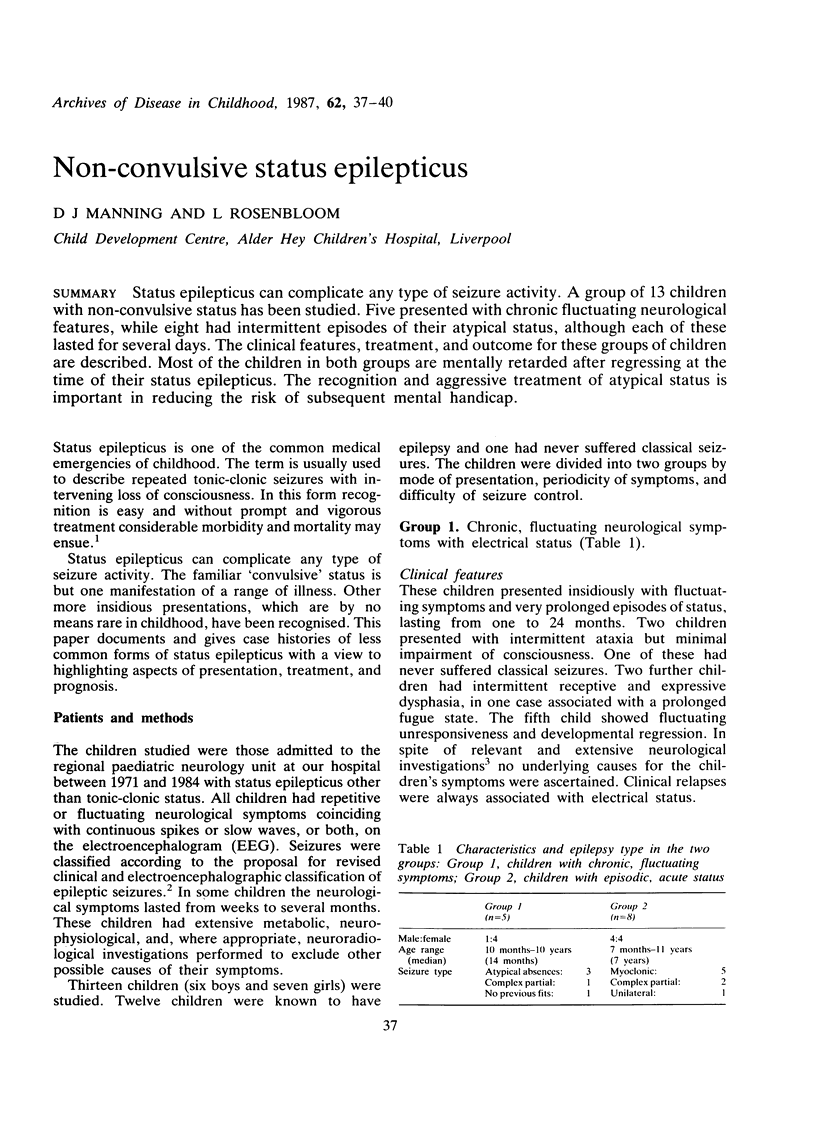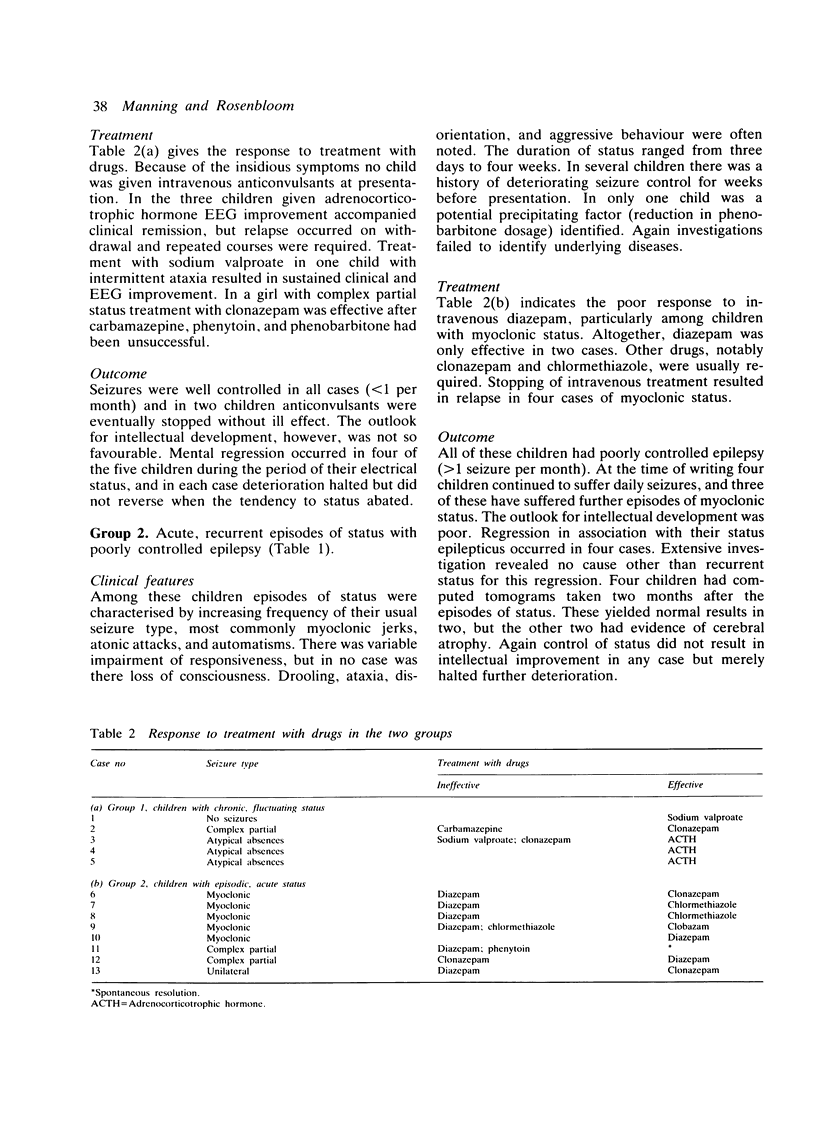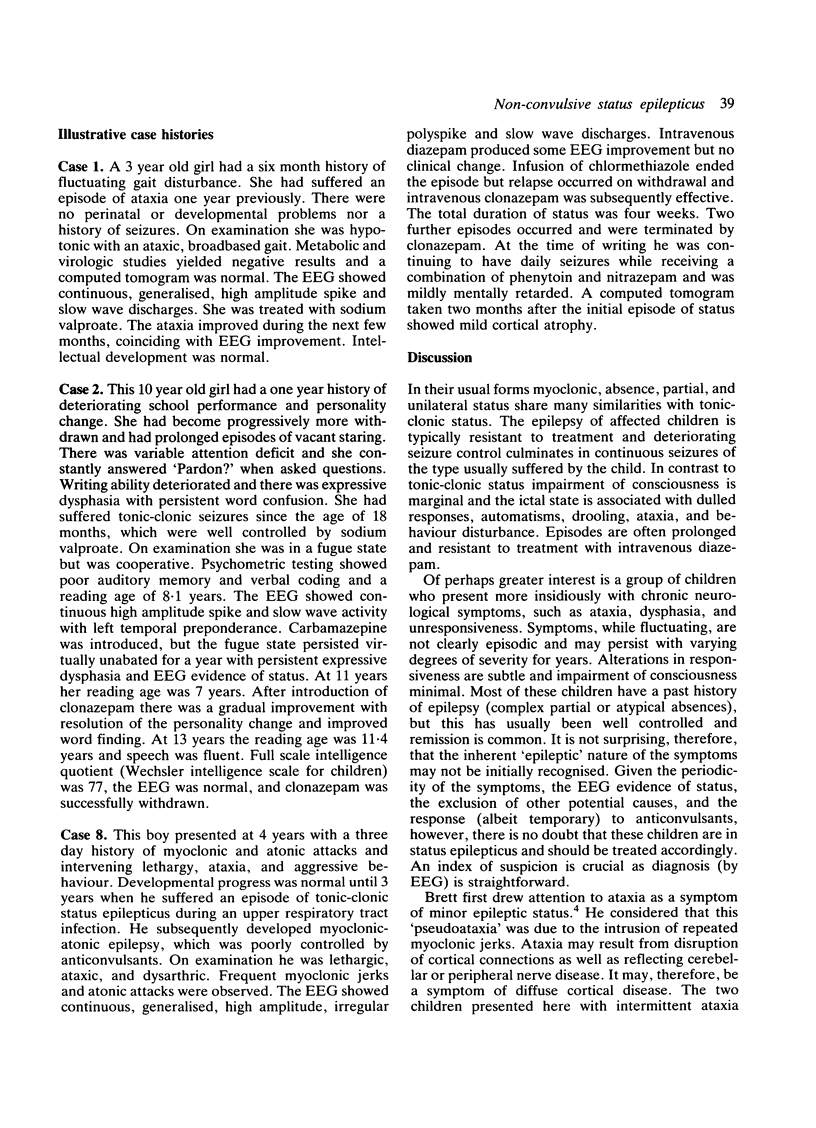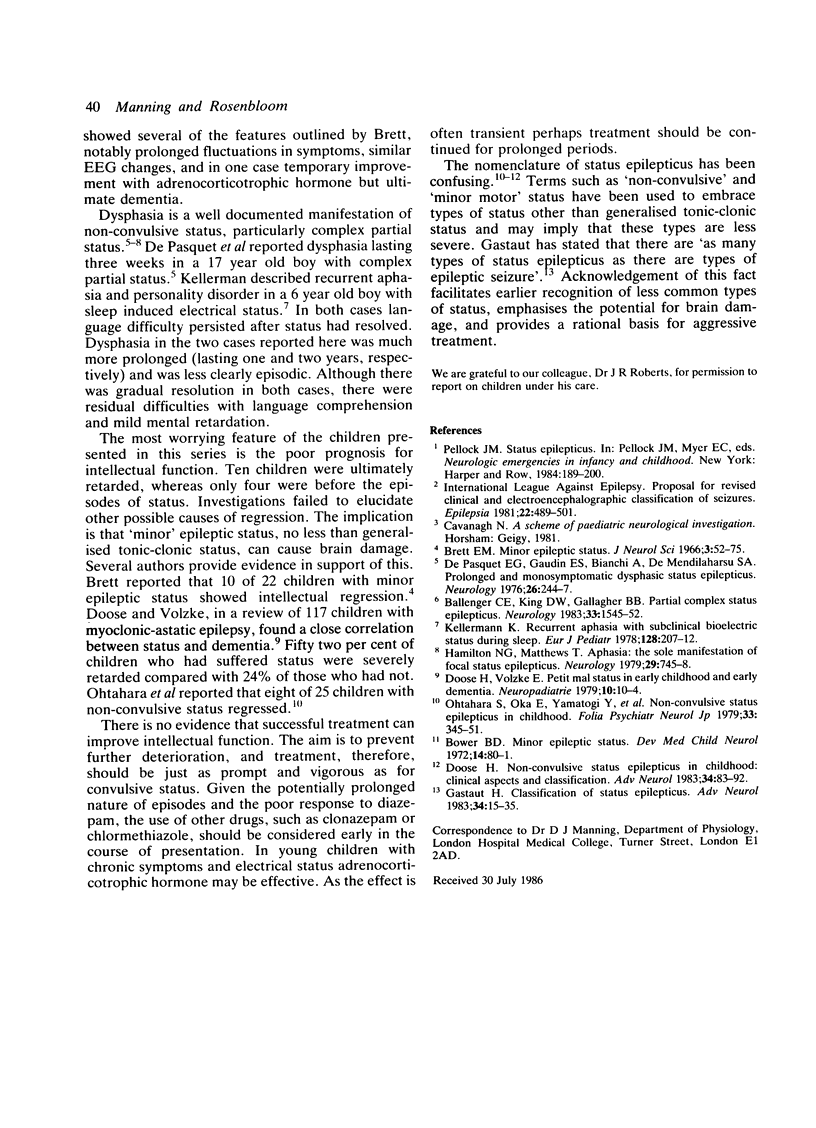Abstract
Status epilepticus can complicate any type of seizure activity. A group of 13 children with non-convulsive status has been studied. Five presented with chronic fluctuating neurological features, while eight had intermittent episodes of their atypical status, although each of these lasted for several days. The clinical features, treatment, and outcome for these groups of children are described. Most of the children in both groups are mentally retarded after regressing at the time of their status epilepticus. The recognition and aggressive treatment of atypical status is important in reducing the risk of subsequent mental handicap.
Full text
PDF



Selected References
These references are in PubMed. This may not be the complete list of references from this article.
- Ballenger C. E., 3rd, King D. W., Gallagher B. B. Partial complex status epilepticus. Neurology. 1983 Dec;33(12):1545–1552. doi: 10.1212/wnl.33.12.1545. [DOI] [PubMed] [Google Scholar]
- Bower B. D. Minor epileptic status. Dev Med Child Neurol. 1972 Feb;14(1):80–81. doi: 10.1111/j.1469-8749.1972.tb02560.x. [DOI] [PubMed] [Google Scholar]
- Brett E. M. Minor epileptic status. J Neurol Sci. 1966 Jan-Feb;3(1):52–75. doi: 10.1016/0022-510x(66)90039-6. [DOI] [PubMed] [Google Scholar]
- De Pasquet E. G., Gaudin E. S., Bianchi A., De Mendilaharsu S. A. Prolonged and monosymptomatic dysphasic status epilepticus. Neurology. 1976 Mar;26(3):244–247. doi: 10.1212/wnl.26.3.244. [DOI] [PubMed] [Google Scholar]
- Doose H. Nonconvulsive status epilepticus in childhood: clinical aspects and classification. Adv Neurol. 1983;34:83–92. [PubMed] [Google Scholar]
- Doose H., Völzke E. Petit mal status in early childhood and dementia. Neuropadiatrie. 1979 Feb;10(1):10–14. doi: 10.1055/s-0028-1085309. [DOI] [PubMed] [Google Scholar]
- Gastaut H. Classification of status epilepticus. Adv Neurol. 1983;34:15–35. [PubMed] [Google Scholar]
- Hamilton N. G., Matthews T. Aphasia: the sole manifestation of focal status epilepticus. Neurology. 1979 May;29(5):745–748. doi: 10.1212/wnl.29.5.745. [DOI] [PubMed] [Google Scholar]
- Kellermann K. Recurrent aphasia with subclinical bioelectric status epilepticus during sleep. Eur J Pediatr. 1978 Jul 3;128(3):207–212. doi: 10.1007/BF00444306. [DOI] [PubMed] [Google Scholar]
- Ohtahara S., Oka E., Yamatogi Y., Ohtsuka Y., Ishida T., Ichiba N., Ishida S., Miyake S. Non-convulsive status epilepticus in childhood. Folia Psychiatr Neurol Jpn. 1979;33(3):345–351. doi: 10.1111/j.1440-1819.1979.tb00768.x. [DOI] [PubMed] [Google Scholar]


